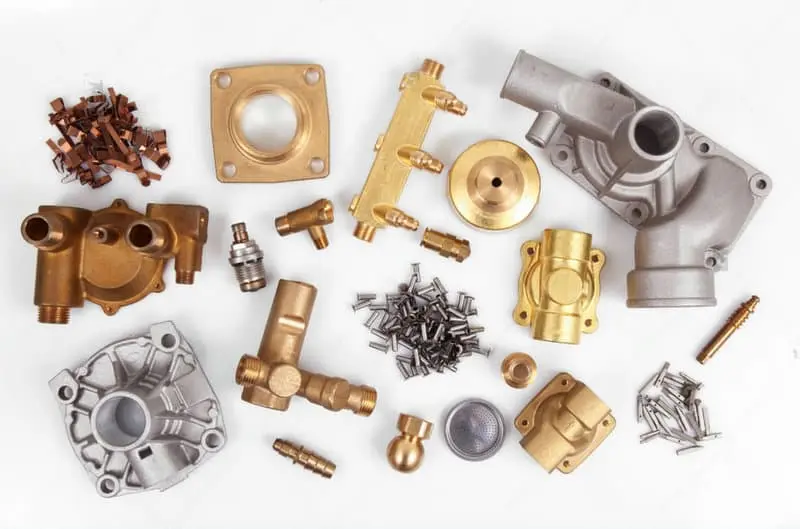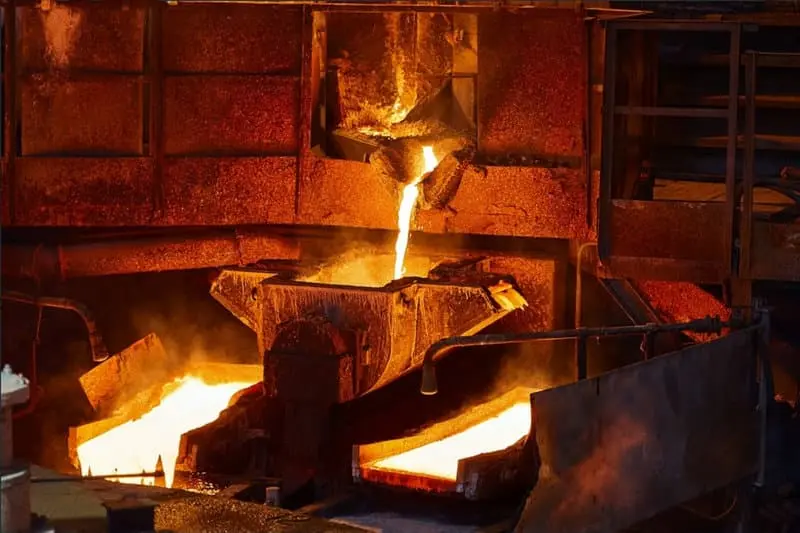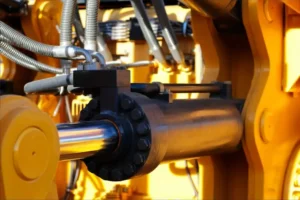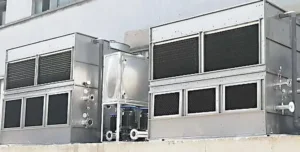Berbagai jenis tembaga dan paduannya memiliki titik leleh yang berbeda. Pure copper melts at about 1085 derajat Celsius, but common copper alloys such as bronze and brass have different melting points.
- Bronze (copper and tin alloy): Melting point is usually between 850 Dan 950 derajat Celsius, depending on the alloy composition.
- Brass (copper and zinc alloy): Melting point is usually between 900 Dan 940 derajat Celsius, and it also varies depending on the zinc content.
Setelah meleleh, it is usually refined, pemeran, and cooled to ensure the quality and characteristics of the casting.
Pengilangan: Selama proses peleburan, impurities may be produced. These impurities can be removed and the purity of the copper can be improved by adding refining agents or using a vacuum or inert gas environment.
Pengecoran: The molten copper is poured into a pre-prepared mold to form the desired shape. Depending on the casting method, sand casting, metal mold casting, or other processes may be selected.
Cooling: After the casting has cooled in the mold, it is usually demolded. This step requires care to avoid damage to the casting.
Post-processing: After cooling, copper castings may undergo subsequent processes such as deburring, polishing, and heat treatment to improve their surface quality and mechanical properties.

Copper Refining
Copper refining is mainly to remove impurities and harmful elements from molten copper to improve its purity and performance.
- Meleleh: Melt the copper to a high temperature to make it liquid. At this stage, fluxing agents (such as fluorides) can be added to help remove impurities.
- Gas treatment: Using inert gases (such as argon) or vacuum environments can reduce the effects of oxidation and reactive gases, thereby improving the quality of copper.
- Dephosphorization: If copper contains phosphorus, it can be removed by heating or adding specific chemicals. Excessive phosphorus can cause copper brittleness.
- Electrolytic refining: In the electrolytic cell, molten copper is used as the anode and pure copper is used as the cathode. After power is applied, pure copper dissolves from the anode and deposits on the cathode, and impurities remain in the electrolytic cell. Electrolytic refining can achieve very high copper purity (usually more than 99.9%).
Copper Casting
Casting is the process of pouring molten copper into a mold to form a specific shape.
- Mold preparation: Select the appropriate mold material (such as sand mold, metal mold or plaster mold), and ensure that the mold surface is smooth and dry to prevent the casting from sticking.
- Melting copper: Heat the copper to a molten state in a furnace, ensuring that its temperature is uniform and avoiding cold spots.
- Pengecoran: Pour the molten copper carefully into the mold, and the copper with good fluidity can fill every detail of the mold. At this time, the casting speed and tilt angle need to be controlled to reduce bubbles and defects.
Copper Cooling
Cooling is a crucial step in the casting process. The main purpose is to transform the molten copper from liquid to solid to form the desired shape and properties.
- Natural cooling: The casting cools naturally in the mold, usually through heat conduction of air or mold material. Natural cooling is slower and helps reduce internal stress.
- Forced cooling: In some cases, forced cooling can be performed using media such as water or wind to accelerate the cooling process. This can improve production efficiency, but the cooling rate needs to be controlled to prevent thermal stress from causing cracks.
- Cooling time: The cooling time depends on the thickness, shape and material of the casting. Thick castings require longer cooling time to ensure uniform solidification.
- Temperature monitoring: Selama proses pendinginan, it is important to monitor the temperature changes of the casting to ensure that it solidifies as expected.
- Demolding: After the casting has cooled to a sufficient hardness, the mold can be removed.
Post-processing
The post-processing process of copper usually includes the following:
- Deburring: After the casting is removed from the mold, there may be sharp burrs on the edges. Deburring is usually done by mechanical methods (such as grinding, cutting) or chemical methods (such as pickling) to ensure safety and improve appearance.
- Surface treatment: Copper castings may be cleaned and polished to remove oxide layers and other contaminants and improve surface gloss. Common methods include mechanical polishing, chemical polishing and electrolytic polishing.
- Perawatan panas: Heat treatment can improve the mechanical properties of copper, such as increasing strength and toughness. Common heat treatment methods include annealing (heating followed by slow cooling) dan pendinginan (rapid cooling), the specific choice depends on the alloy composition and end use of the copper.
- Coating: To improve corrosion resistance or change the appearance, copper castings can be coated, such as electroplating, spraying or painting. This can provide additional protection and improve the appearance of copper.
- Inspection and quality control: After post-processing is completed, the castings will undergo various inspections (such as visual inspection, ultrasonic inspection, X-ray inspection, dll.) to ensure that they meet the design and performance requirements.








